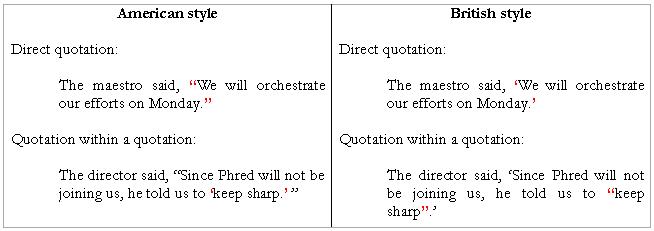
I contemplated the title of this section for a while because I wasn’t sure how to address it regarding American versus British style for punctuation and usage. This is part of the utilization I was talking about in the introduction. I will explain each of the variations and modifications I use and explain the differences and why I find them to be better (more efficient). Please note that the style used here will be used throughout the book. When we move into mechanics (punctuation), more examples will be provided.
In American English, direct quotations are set by double quotation marks (“ ”). In British English, direct quotations are set by single quotation marks (‘ ’). American English uses single quotation marks for quotations within quotations, vice versa for British English.
Whether you’re writing or typing, it is faster and more efficient to use single quotation marks. The direct quotation is more common than the quotation within the quotation; therefore, it is more logical to use single quotation marks for the direct quotation. I’ve included examples of both the American and British styles of quoting:

Another point I would like to make about the American style is that we believed that by including punctuation within quotation marks that it some how makes its display more ‘tidy’. I think it gives a false impression that any punctuation within the quotation marks is actually part of the original citation or text. If you’ll notice my quoting of the word tidy, you see that I used my single (more efficient) quotation marks, and I left the end mark outside the closing quotation mark. I refuse to sacrifice propriety in the name of tidiness.